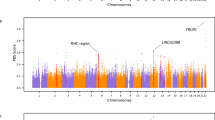Abstract
Young Seychelles warblers Acrocephalus sechellensis often remain in their natal territories as helpers. Helpers on low-quality territories (as measured by food availability) reduce their parents' reproductive success, whereas 1–2 helpers on high-quality territories increase their parents' reproductive success, thereby enhancing their inclusive fitness, in addition to gaining experience1,2, and opportunities for co-breeding3. Helpers are mostly females, and we have previously suggested that parents may adjust the sex of their single egg to territory quality4. We therefore took blood samples from nestlings, and determined sex using random amplified polymorphic DNA (RAPD) markers. We show that biased hatching sex ratios are caused by biased production and not by differential embryo mortality. Unhelped breeding pairs on low-quality territories produce 77% sons, whereas unhelped pairs on high-quality territories produce 13% sons. Breeding pairs that were transferred from low- to high-quality territories switched from the production of male to female eggs. Breeding pairs occupying high-quality territories switched from producing female eggs when no or one helper was present, to producing male eggs when two helpers were present in the territory.
This is a preview of subscription content, access via your institution
Access options
Subscribe to this journal
Receive 51 print issues and online access
$199.00 per year
only $3.90 per issue
Buy this article
- Purchase on Springer Link
- Instant access to full article PDF
Prices may be subject to local taxes which are calculated during checkout
Similar content being viewed by others
References
Komdeur, J. Behav. Ecol. Sociobiol. 34, 175–186 (1994).
Komdeur, J. Behav. Ecol. 7, 326–333 (1996).
Komdeur, J. thesis, Univ. Cambridge (1991).
Komdeur, J. Proc. R. Soc. Lond. B 263, 661–666 (1996).
Komdeur, J. Nature 358, 493–495 (1992).
Komdeur, J. et al. Anim. Behav. 49, 695–708 (1995).
Komdeur, J. J. Biol. Rhythms 11, 333–346 (1996).
Komdeur, J., Bullock, I. D. & Rands, M. R. W. Bird Conserv. Int. 1, 177–185 (1991).
Komdeur, J. Biol. Conserv. 76, 143–152 (1994).
Williams, G. C. Proc. R. Soc. Lond. B 205, 567–580 (1979).
Gowaty, P. A. & Lennartz, M., R. Am. Nat. 126, 347–353 (1985).
Clutton-Brock, T. H. Ibis 128, 317–329 (1986).
Gowaty. P. A. Current Ornithology Vol. 8 (ed. Power, D. M.) 141–172 (Plenum, New York, 1991).
Daan, S., Dijkstra, C. & Weissing, F. J. Behav. Ecol. 7, 426–430 (1996).
Emien, S. T., Emlen, J. M. & Levin, S. A. Am. Nat. 127, 1–8 (1986).
Lessells, C. M. & Avery, M. I., Am. Nat. 129, 610–620 (1987).
Glutton-Brock, T. H., & lason, G. R. Q. Rev. Biol. 61, 339–374 (1986).
Johnson, C. N. Nature 332, 726–728 (1988).
Trivers, R. L. & Willard, D. E. Science 179, 90–92 (1973).
Kappe, A. L., Komdeur, J., Weising, F. L. & van de Zandc, L. Evolution (suhmitled).
Sambrook, J., Fritsch, E. F. & Maniatis, T. Molecular Cloning. A Laboratory Manual. 2nd edn (Cold Spring Harbor Laboratory Press, Cold Spring Harbor, New York, 1989).
Griffiths, R., Tiwari, B. Proc. Natl Acad. Sci. USA 90, 8324–8326 (1993).
Author information
Authors and Affiliations
Rights and permissions
About this article
Cite this article
Komdeur, J., Daan, S., Tinbergen, J. et al. Extreme adaptive modification in sex ratio of the Seychelles warbler's eggs. Nature 385, 522–525 (1997). https://doi.org/10.1038/385522a0
Received:
Accepted:
Issue Date:
DOI: https://doi.org/10.1038/385522a0
This article is cited by
-
How likely was the successful introduction of the island canary to Midway Atoll?
Biological Invasions (2023)
-
No evidence for adaptive sex ratio adjustment in a cooperatively breeding bird with helpful helpers
Behavioral Ecology and Sociobiology (2023)
-
No evidence of sex ratio manipulation by black-throated blue warblers in response to food availability
Behavioral Ecology and Sociobiology (2023)
-
Testing the environmental buffering hypothesis of cooperative breeding in the Seychelles warbler
acta ethologica (2023)
-
Facultative and persistent offspring sex-ratio bias in relation to the social environment in cooperatively breeding red-winged fairy-wrens (Malurus elegans)
Behavioral Ecology and Sociobiology (2022)
Comments
By submitting a comment you agree to abide by our Terms and Community Guidelines. If you find something abusive or that does not comply with our terms or guidelines please flag it as inappropriate.



